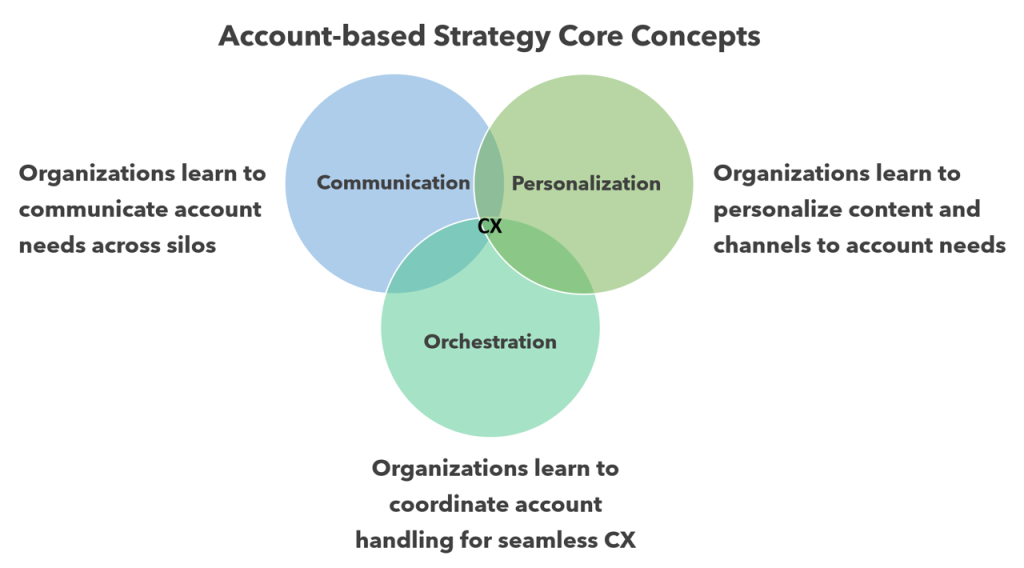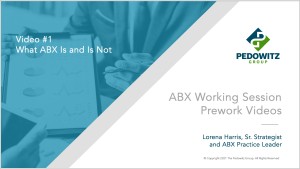By now you have probably heard about ABM or Account-based Marketing. This is a commonly-used name for a discipline that has been gathering traction for about a decade. But the very name implies that it focused on Marketing, when in fact an account-based strategy is just as much about Sales and other client-facing business functions. So, many have argued that it should be referred to as “Account-based Strategy” (because who doesn’t want good ABS?) But talking about ABS all day is weird, so many leaders are using the term ABX, for “Account-Based Experience” (as in customer experience, which is at the core). ABX can also refer to “Account-based Everything” which acknowledges how important key accounts are to an organization.
Want to explore some ABX fundamentals? Listen to these short videos (20 minutes total):
- ABX Video 1 – What ABM Is and Is Not
- ABX Video 2 – ABX versus DG Mktg
- ABX Video 3 – The Three “Tions” of ABX
ABX concepts sound simple, but it takes a village. Learn more:
I know, it’s a lot to absorb, and you might think it would be easier to purchase an ABX platform. But the truth is, ABX is a discipline based on customer insight, personalization, and cross-functional collaboration. To make it work, organizations must fix their communications problems and meet their customers’ information needs. Unfortunately, while technology can enable cross-functional communication, it cannot replace it.

Think about it – it probably took years for your company to develop a sophisticated demand-generation engine. Expect ABX to take that kind of commitment as well. You’ll probably need new talent, cross-functional training and external guides. But investing in organizational change is a decision well worth making. Decide to make your organization more profitable and your clients more satisfied by implementing an account-based strategy.

